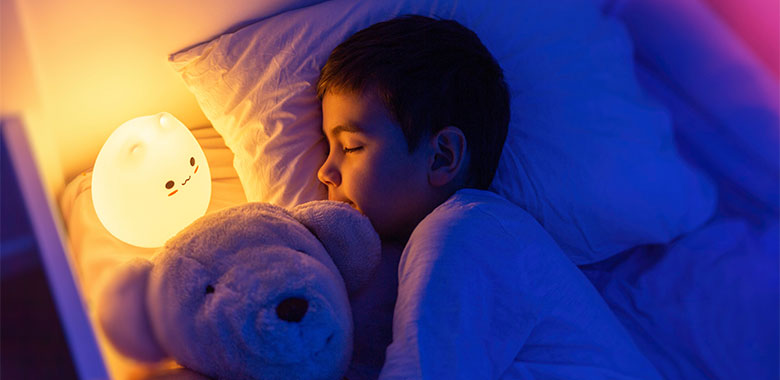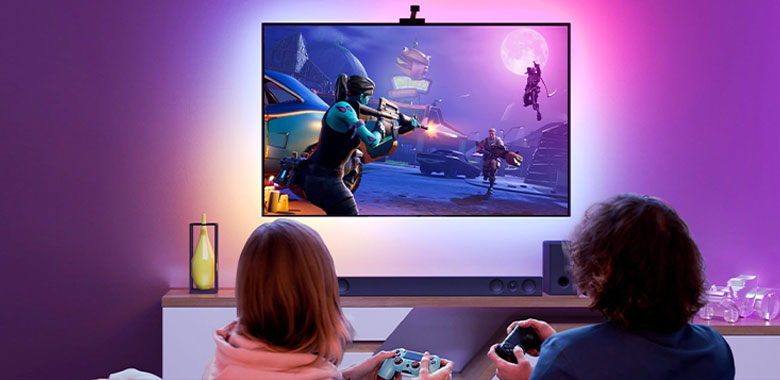Most people need to pay more attention to the efficacy of choosing the best LED light colors for different situations. Unfortunately, many buy LED light colors based on the energy-efficient feature commonly plastered on any product box.
However, there are a lot of factors to consider if you want to buy good LED light colors that will benefit your budget… and your health in the long run.
Our bodies are programmed to respond to light. From the moment we wake up and then back to when we sleep.
We take advantage of what light nature gives us and use it as a baseline for how color affects our bodies.
The best LED light color for headaches and migraine is Green. Research shows that exposure to green light reduces the pain's intensity by 60%. It is also suitable for people experiencing stress and anxiety.
Green light also gives off a calm and relaxed ambiance, which is pertinent if you want an atmosphere that promotes rest. Most headaches go away with a good night's rest.
Bright and high-intensity lights are common factors that aggravate headaches. Therefore, white, red, and especially blue are colors you should avoid.
Studies have shown that light brightness affects the way a person experiences emotion. Strong light increases both positive and negative reactions. Thus if a person has a headache, they will feel the pain more strongly when exposed to bright light.
The colors perfect for sleeping are green, amber, and red because these colors promote the production of melatonin. Melatonin is a hormone responsible for your body experiencing sleepiness.
We see amber and red during sunset, the time that signals the end of the day. Our body reacts to these colors by increasing our appetite and feeling tired afterward. The parasympathetic nervous system or "rest and digest" response is responsible for this.
Amber and red LED lights block blue light, a color that promotes alertness and focus. You should avoid bright colors common during the daytime, like white and yellow.
Color temperature also affects our melatonin release. The lower the scale, the less melatonin production is hampered. Amber and red LED lights measure between 1000K to 4000K(Kelvin), at or near the lowest possible color temperature. Therefore, those who often wake up in the middle of the night will find it easy to go back to sleep.
Dim green LED light produces a soothing and relaxing effect on a person's state. Green is a relatively easy color for the human eye to process. It is because green light has a longer wavelength and lower frequency than blue light, which contributes to its calming effects.

Natural white/Daylight (5500K-6500K) is the most optimal LED light for studying. It helps you study longer and keep you focused because it simulates the daytime light when our body is at its most active and alert state.
Here are the benefits of natural white.
Suppose you want a LED light that results in excellent color quality for items in a room. In that case, we suggest a 90 or higher rate in the Color Rendering Index (CRI).
The following LED lights for studying depend on personal preference.
Warm White (2700K - 3000K)
Benefits:
Cool White (4000K - 5000K)
Benefits:
RGB (red, green, blue) LED lighting is popular in gaming because it allows users to customize the color and intensity of the lighting in their setup. This lighting can create a more immersive and personalized gaming experience and help reduce eye strain and fatigue during long gaming sessions.
Benefits:
Experiencing eyestrain? Read on!

Light dictates some of our body functions; time to wake up, appetite, mood, and much more. Using what we discovered effectively, we can create a perfect environment to enhance our output. We can also promote rest and pain relief.
LED lights are eco-friendly, durable, and versatile ways of lighting. They also have numerous applications to improve our everyday tasks and disposition. So why not install one in your home?
We have the right products for you.
We at Tasmor, pride ourselves on providing cutting-edge lighting for your home. They are beautiful to look at and have added benefits for your health and work that you can experience firsthand. Formulate your own LED light ideas to reimagine your home or workspace.
We supply G9 LED Bulbs, LED Plant Lamp, Dimmable LED Light Bar, and LED TV Backlights. These products are guaranteed to take your home lighting to the next level. Cost-effective, durable, and looks great in any room. Formulate your own LED light ideas to reimagine your home or workspace.
The future has never been brighter!
You must be logged in to post a comment.